People
artnet Asks: Peter Chater on Dragging the Art World into the 21st Century
The founder of Artlogic tells us how galleries are moving to the cloud.
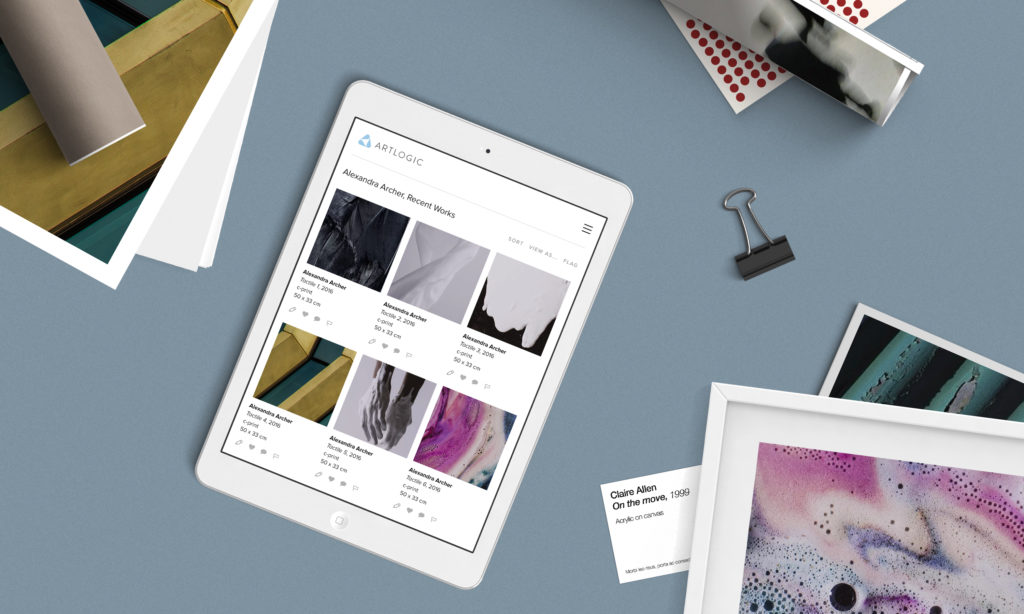
The founder of Artlogic tells us how galleries are moving to the cloud.

Artnet Galleries Team

Technology continues to evolve at a startling rate, dramatically changing the ways in which we interact with one another and conduct business online. The art market—just like other industries—has had no choice but to evolve, and yet the adoption of new technologies has often been approached with reluctance by the traditional gallery market.
Artlogic, the first company to launch a cloud-based inventory management system for the art world, has recently released an updated and more advanced version of their database, Artlogic 3. Here, we talk to Artlogic founding director Peter Chater about the current trends in art technology, and whether we are finally seeing a shift in attitude.
Tell us about your background in art and what led you here?
My first experience in the art world was back in the late 80s when I started working for the then-fledgling Karsten Schubert gallery in London. This was right around the time that the Young British Artists began their rise to prominence, and I was lucky enough to work with a number of them, including Gary Hume, Sarah Lucas, Michael Landy, and Rachel Whiteread, as well as more established artists like Bridget Riley. It was an incredibly inspiring and exciting period of my life.
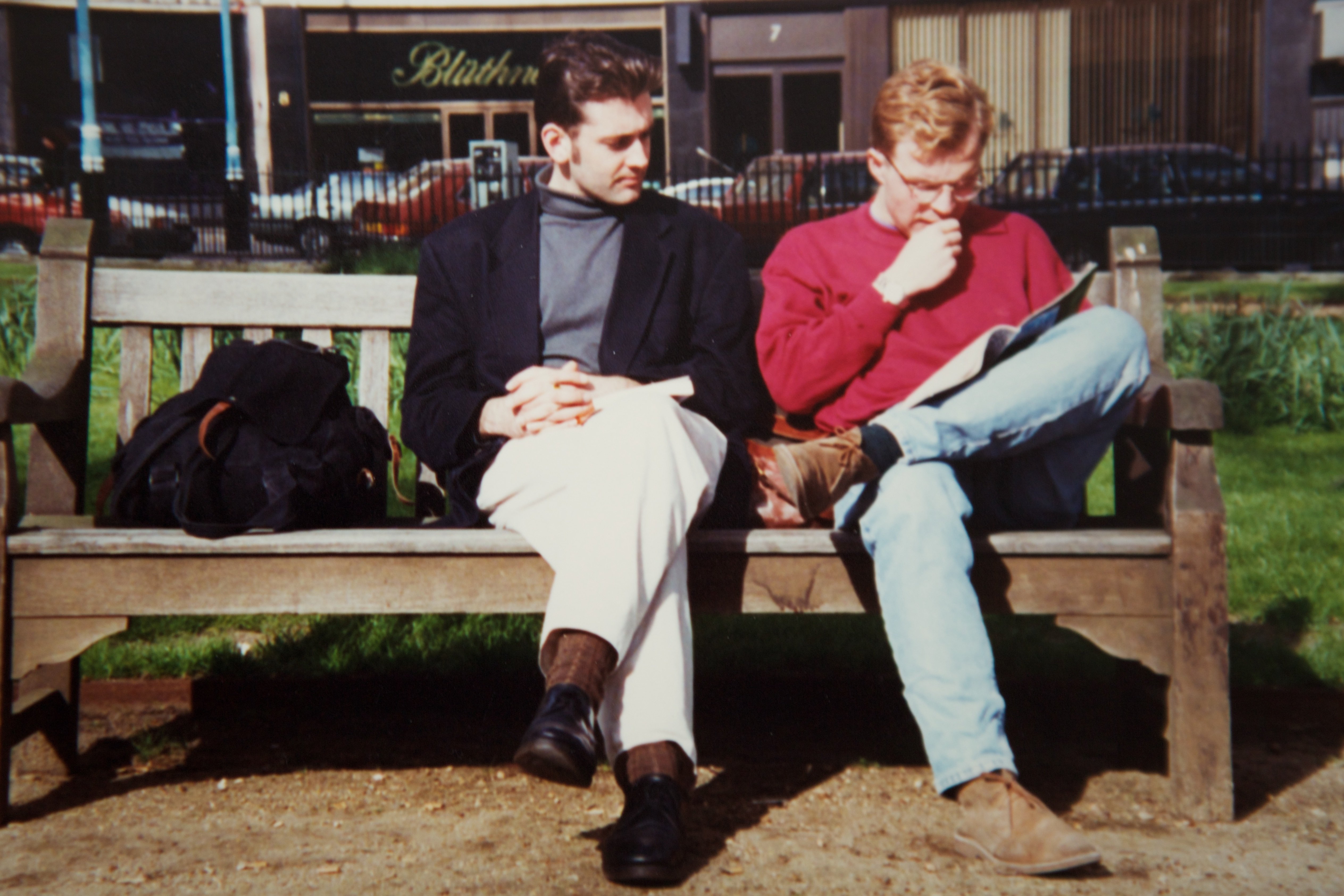
Peter Chater with Karsten Schubert c. 1991
How did you end up developing technology for the art world?
During those early days, everything was done on paper—the whole art world ran on typewriters. We had stacks of black box files that stored everything, from photographic records, inventory sheets, artist CVs, to press clippings. It was inefficient and I hated typing, so I felt that there must be a way to streamline the process. Around this time, I had purchased my first computer, and began experimenting with the idea of developing a digital contacts and inventory database for the gallery. This was the initial catalyst towards thinking about a more comprehensive database solution, which years later became the world’s first online art gallery management system, which I called Artlogic.
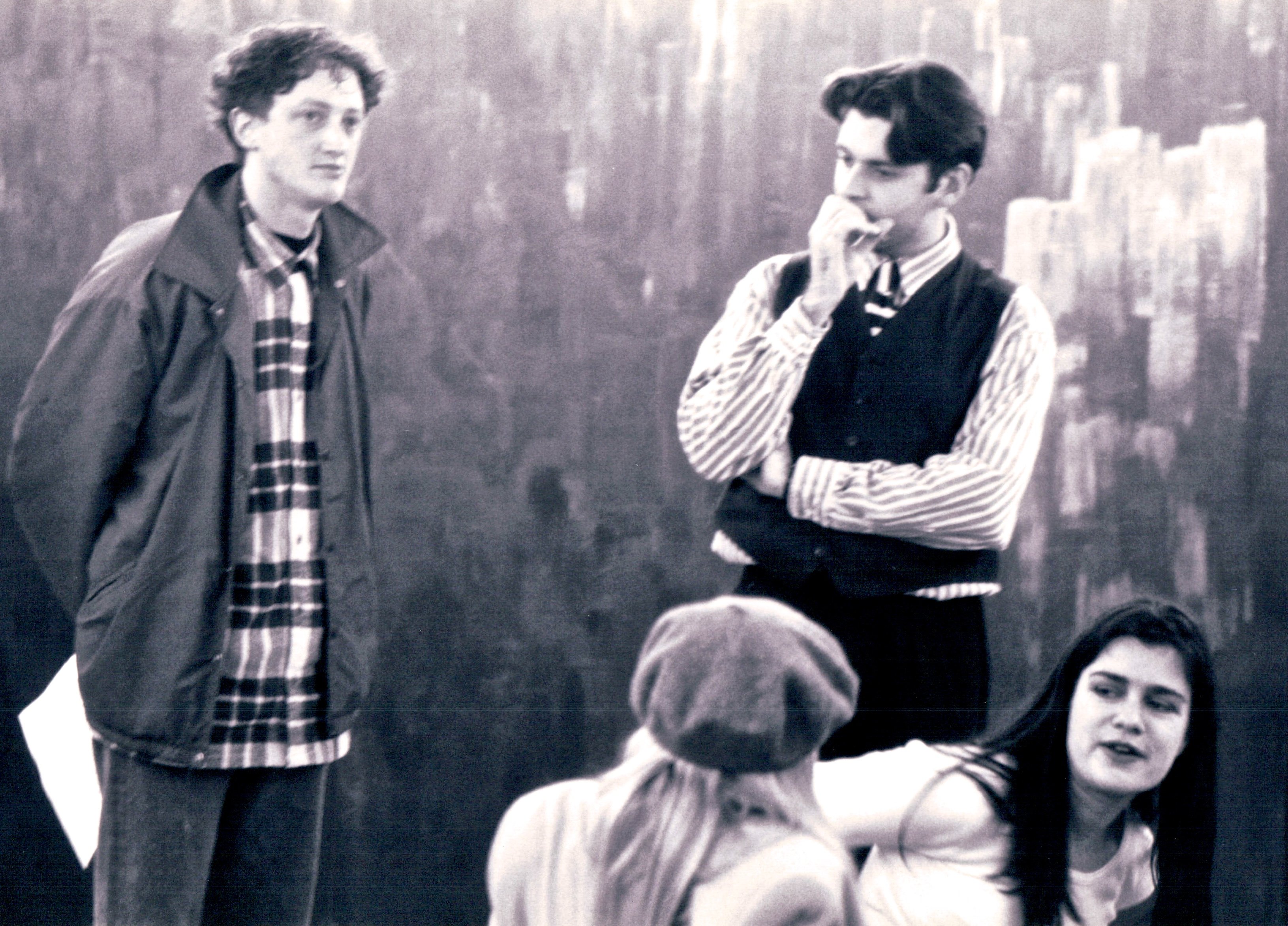
Peter Chater with Artists Michael Landy and Abigail Lane at Karsten Schubert Gallery, 1994.
The art world has been historically reluctant to embrace new technology. How would you sum up how things have progressed in the past few years?
As you rightly point out, the art world was strangely averse to moving online and embracing new technology. Cloud computing is now commonplace, but when we started developing online databases, the concept didn’t even exist, and many long-established art firms were particularly cautious. Since then, we have seen a remarkable shift in the art world’s adoption of new technology. In terms of dealers and collectors, the increased importance and continued growth of international art fairs—and international travel in the art market in general—means that streamlined and efficient technology is now more critical than ever before. Many collectors now expect artworks to be offered to them via their phone, and within seconds; as a result, galleries are now looking to upgrade their systems to meet their changing needs.
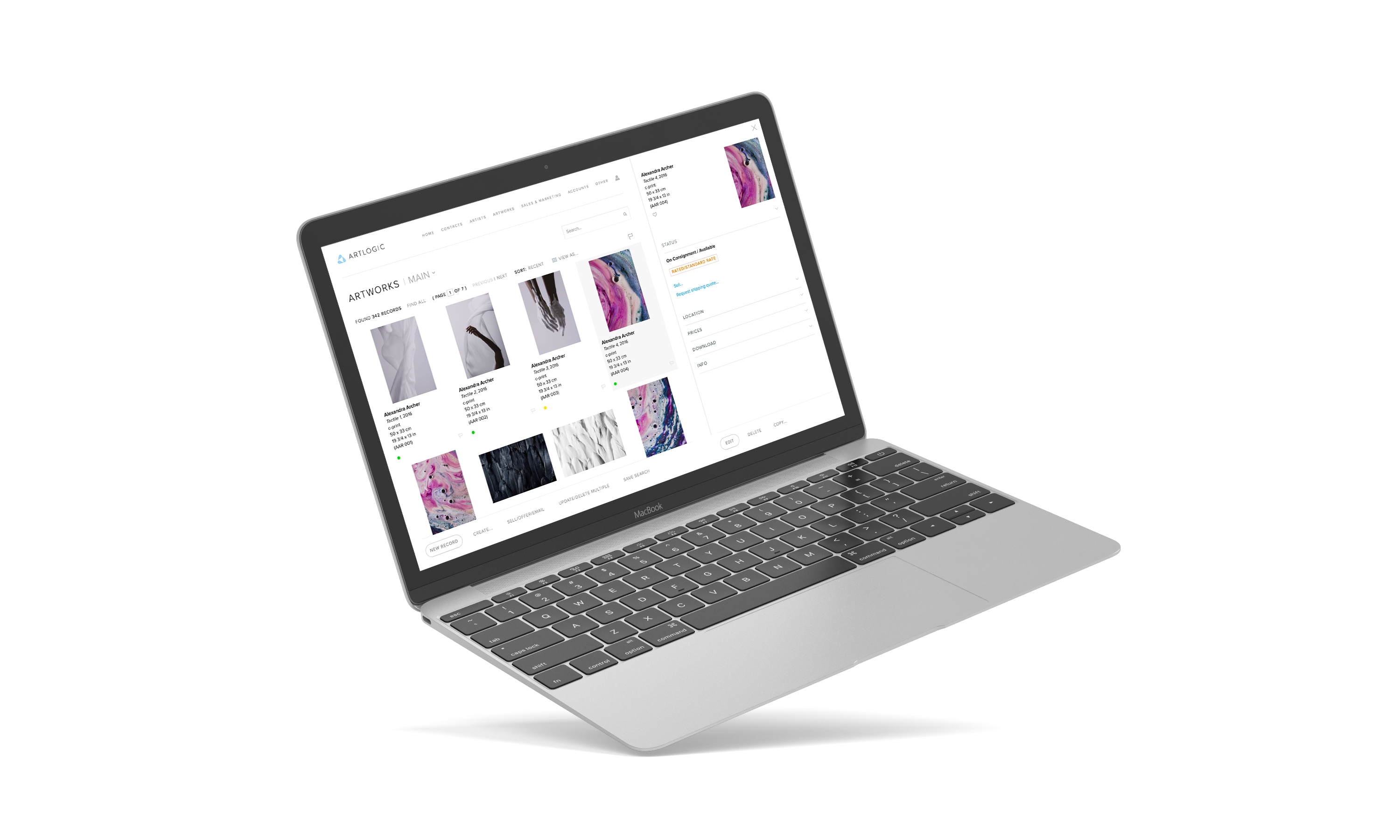
Artlogic 3 interface. Courtesy of Artlogic Media Ltd.
Are there any recent innovations you predict as being essential and groundbreaking to the art world?
Without a doubt, the move towards mobile devices has completely changed the way the art world conducts business. The immediacy in which we can consume information is unprecedented and a total game changer. Today’s phones have fantastically intuitive user interface designs that have allowed even technophobes to make full use of them. Artlogic 3 is in many ways a direct response to this. There is so much incredibly useful hardware built into the phone, and we want to utilize as much of it as we can. For instance, imagine a studio visit. Typically when a gallery director visits an artist’s studio, the process of inputting artworks into the database is actually quite lengthy and involves a number of people working in a variety of areas. However, now the director will be able to snap a photo with their phone (even if this just serves as a temporary place holder), and immediately create a record on the database. Collectors are often so eager to know about new works that the director might want to use Artlogic to offer that work directly from their phone by way of a sales email. All of this can now be done before the director has even left the artist’s studio.
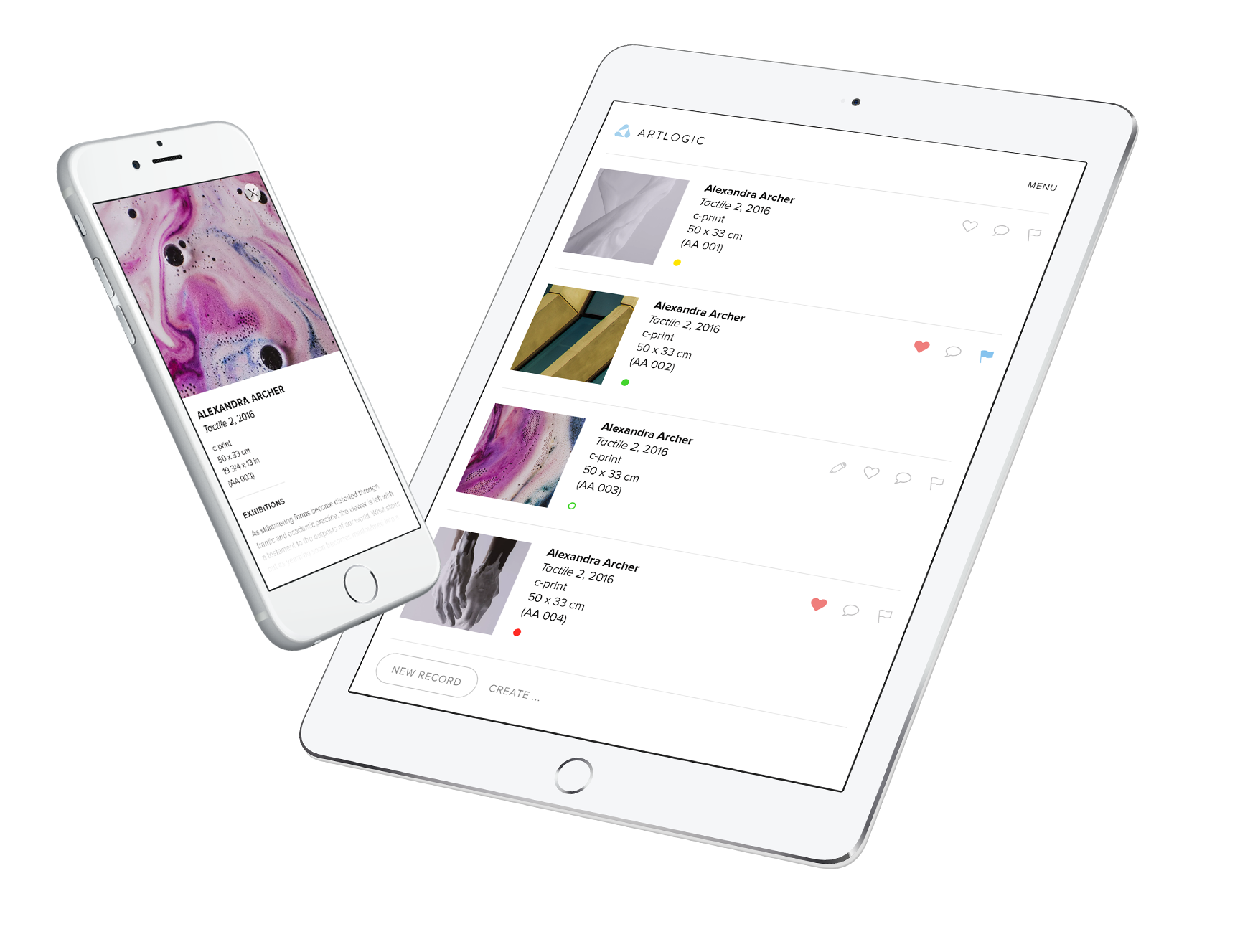
Artlogic 3 interface. Courtesy of Artlogic Media Ltd.
Artlogic has continued to adapt over the decades, what can we expect next?
We are currently focusing on the continued development of Artlogic 3, which we launched in September. For our existing clients, switching to Artlogic 3 is much like an iOS upgrade you receive on your iPhone. It has the same underlying core functionality as the original database, but with a beautiful new skin and lots of fantastic new features. It’s a completely free upgrade. The underlying technology behind Artlogic 3, which was a complete rewrite of our previous system, enables us to respond quickly to clients’ needs and add feature requests with amazing speed. Listening to our clients is vital, and they often come up with fantastic ideas for which we’re very grateful.
The artnet Gallery Network is a community of the world’s leading galleries offering artworks by today’s most collected artists. Learn more about becoming a member here, or explore our member galleries here.